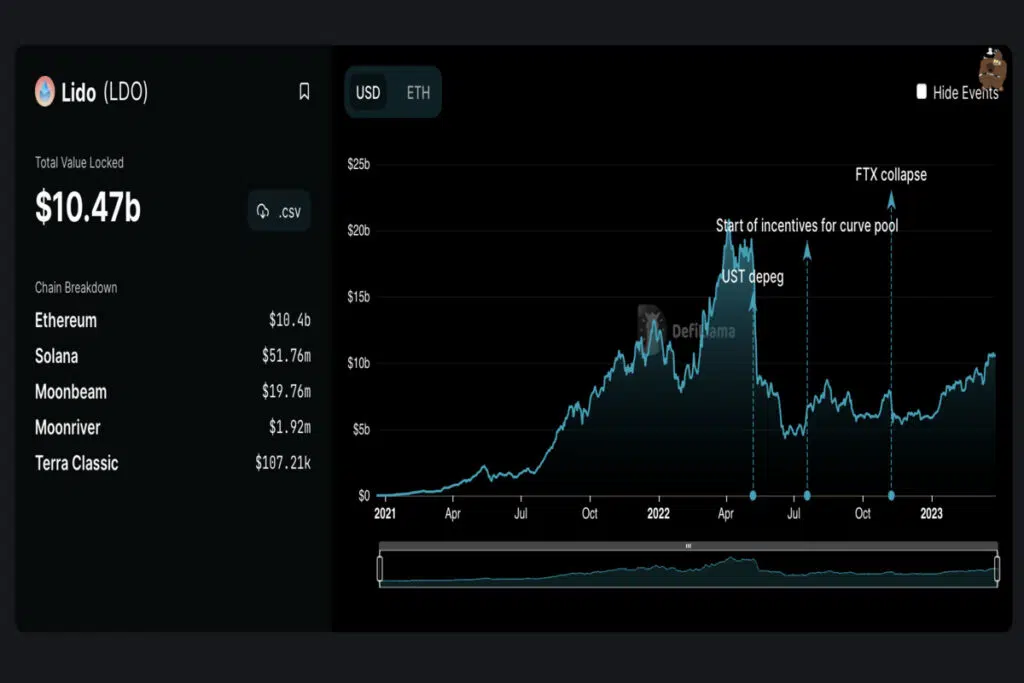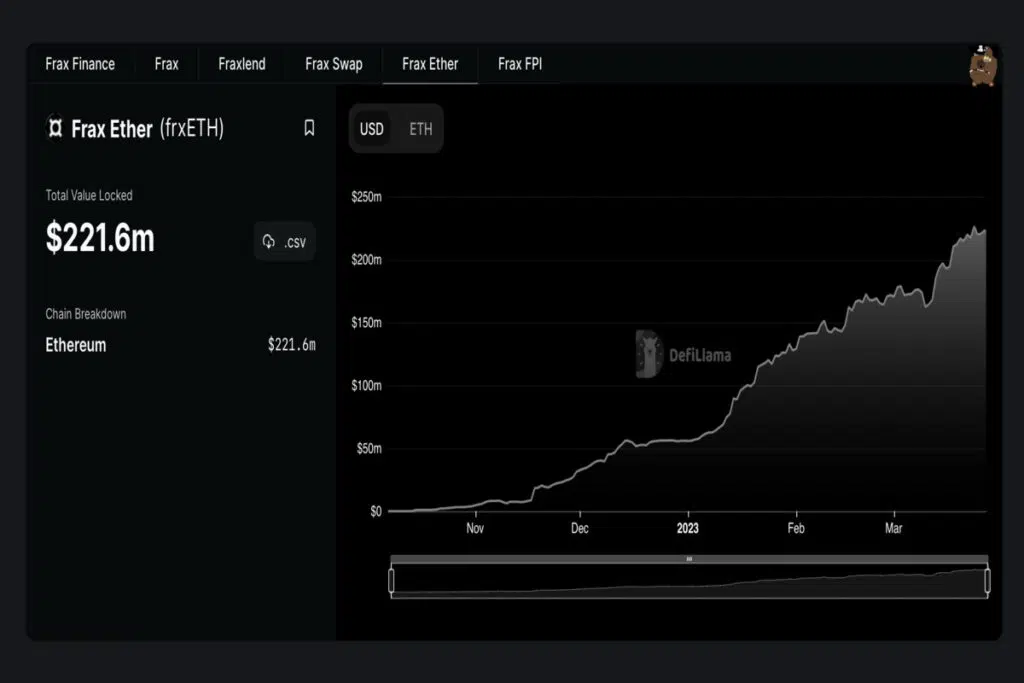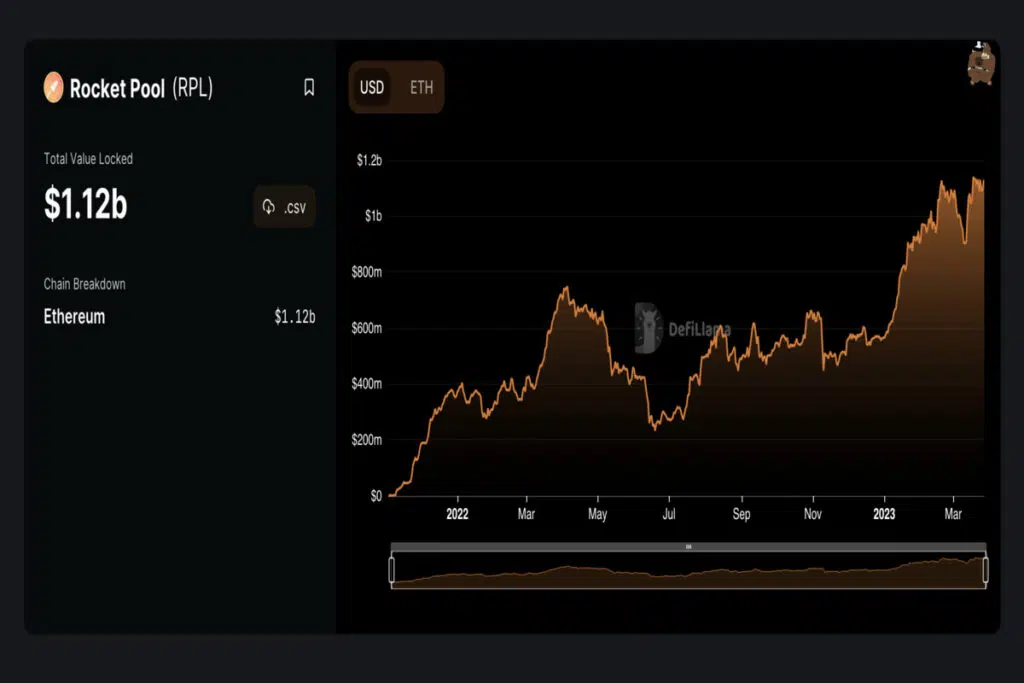Liquid Staking Derivatives (LSD) are shaking up the cryptocurrency world and they have started experiencing massive adoption following the breakout of the Ethereum Shanghai update that will allow users to withdraw more than 16 million ETH and stake them elsewhere. The antecedents of Liquid Staking Derivatives in the Defi space create an impression that they are the next big thing in the Defi space.
Liquid Staking Derivatives ( LSDs) are the latest innovation in the DeFi space, allowing users to earn staking rewards while retaining access to their assets. They operate via tokenization and can be used for lending, trading and collateral across the DeFi ecosystem.
In this article, we will discuss what liquid staking is, examine the concept of derivatives and proceed to examine what liquid staking derivatives are, outline some advantages of Liquid staking derivatives, risks associated with LSD, and some of the top LSDs in the cryptocurrency market.
To completely understand the mechanism behind Liquid staking derivatives, we need to examine two concepts; which are: Liquid Staking and Derivatives.
Liquid Staking
Staking involves users locking up their assets for a specific period. Doing this means they will most likely miss out on other opportunities to profit by trading their tokens. However, the evolution of liquid staking allows token holders to earn staking rewards and use their tokens as they desire. This ensures that stakers have access to staking rewards and the opportunity to use their tokens in external trades, which further help them maximize returns and generate multiple revenue streams.
Liquid staking is an advanced or updated version of traditional staking that is available on smart contract protocols. To keep the blockchain secured, stakers pledge their funds whilst still having access to those funds at any time.
Derivatives
Derivatives are simply defined as contracts between two parties. They are financial instruments that are backed by an underlying asset ( a staked token ). This underlying asset or staked token represents the value of your staked assets. The price of a derivative is determined by an underlying asset or staked token value fluctuations. We have already examined the basic concepts that birth Liquid Staking Derivatives; hence let us proceed to discuss what Liquid Staking Derivatives are
What are Liquid Staking Derivatives (LSDs) ?
LSDs are tokens that confirm and validate a staker participation in the staking pool. These tokens can be used for lending, trading, and collateral throughout the Defi ecosystem. LSDs leverage the concepts of tokenization to ensure that participants or stakers can benefit from derivatives and the benefits associated with staking their tokens. LSDs pave the way for a staker to stake any amount of their desired token and in return, they get a derivative token that can be used in other Defi protocols.
Furthermore, LSDs allow investors to generate returns on their staked assets while using them as collateral in other Defi protocols. A major advantage of LSDs is that they allow users to earn staking rewards without having to lock up their tokens for a long period; however, locking up tokens for a long period can become a bad investment sometimes due to the volatile nature of crypto assets.
Finally with LSDs; stakers can earn staking rewards, retain access to their funds and take advantage of price fluctuations in the market.
LSDs Mechanism : How Does It Work ?
We already know that when tokens are staked, they are locked for a period, hence they cannot be traded or withdrawn within that period. However, the evolution of LSDs is changing the narrative as it allows users to stake any amount of an asset and unstake them without any impact on the initial deposit. This is because the deposits are locked on liquid staking platforms and the users are issued a tokenized version (that is a derivative token ) of that crypto asset. These derivative tokens have an equivalent value of the amount that the user has stacked and they operate one-to-one with the original asset.
However to easily identify them they are given a different emblem or symbol. For example, if you deposit 2ETH into a liquid staking service and request a derivative, you will receive one stETH as a derivative token. This derivative token can be traded and spent or stored elsewhere.
This allows the users to earn staking rewards on their initial deposits whilst generating funds from their derivative tokens.
To have a clearer understanding of the mechanism of LSDs, consider this scenario:
You have a total savings of $20,000 and you decided to take it to the bank and lock it up in a vault for 3 months; however because the bank realizes you will have needs and situations will arise that will require you to spend money, they gave you coins which are equivalent of the $20,000 you locked up. With these coins, you can pay your bills, perform business transactions, and every other thing you would have done with the $20,000 locked up.
At the end of the 3 months, you get back your $20,000 and rewards associated with locking your funds for that period, you will also have access to profits you made using the coin as a legal tender. In this scenario, the $20,000 you locked up is your staked token, while the coin which is equivalent to the $20,00 that was locked up is your derivative token.
Advantage Of Liquid Staking Derivatives
They Promotes and Encourage Staking Activity
Staking tokens makes the network more secure and stable. There is a direct relationship between the security of a Proof of Stake network, the number of validators on the network, and the amount of capital they stake. Hence, the higher the number of validators on the network, the higher the amount of staked capital increases, and the stronger and more secure the network becomes.
However, the inability of users to have access to their staked tokens during the period they are staked remains a limitation of staking, and this is where the concept of liquid staking derivatives comes in. LSDs provide a unique solution by issuing a tokenized version or derivative token of the staked crypto asset. In recent times this invention has increased staking activities as stakers are now confident that whenever they stake their assets they get a derivative token that can be used for other activities like lending and trading.
Access to Multiple Income Streams
With LSDS, stakers can now lock their funds or assets on a platform and proceed to use the tokenized version or derivative token as collateral to have access to crypto-backed loans. These loans are deposited on higher yields to generate more return on investment ( ROI).
Risks Associated with Liquid Staking Derivatives
Slashing
No doubt, liquid staking derivatives have many exciting benefits and rewards, but this doesn’t make it risk-free. A common drawback is the risk of financial loss from slashing. A slashing mechanism regulates and checks misbehaviors ( e.g. double signing and validator downtime) by validators ( someone or a network node that processes and validates transactions on a blockchain). Whenever a misbehavior is detected, either intentional/ unintentional, a percentage of the validator token will be lost.
Smart Contract Risk
Another common risk is smart contract risk. Although blockchain technology is known to be safe, we have to agree that sometimes vulnerabilities exist and intruders can take advantage to exploit users of their funds and assets.
A user can lose their staked funds if they lose their tokenized asset/ derivative token in a trade or transaction, and the only way to retrieve the staked funds is to make another deposit equivalent to it.
Top Liquid Staking Providers
Below are some of the top liquid staking protocols in the crypto space. These LSDs have their unique mechanism and methods for generating liquidity.
stETH by Lido Finance
Lido Finance derivative is stETH ( the st means staked).Lido Finance is the most popular liquid staking protocol. The native token ( LDO) is the governance token used in supporting ETH liquid staking, users also use the LDO digital token to vote on network proposals and also earn passive income in staking.
Furthermore, when a user stake their ETH token, Lido presents them with stETH in exchange. These derivatives ( stETH) can be withdrawn and used across 27+ Defi applications and crypto wallets.Lido charges a 10% fee for liquid staking services, these fees are evenly split between the DAO and the node operators.
At the point of writing, they have a 73.34% of ETH in the market share, 5.2 million staked ETH, and a Total Value Locked( TVL) of $10.47billion

cbETH by Coinbase
At the point of writing, Coinbase has 15.64% of ETH in the market share; 1.1 million staked ETH, and a Total Value Locked( TVL) of $2.09 billion. The liquid derivative token of Coinbase is cbETH. One of the profound reasons why Coinbase launched its LSDs is to create competition for Lido’s dominance with the sole aim of preventing Lido from jeopardizing Ethereum decentralization. However, a limitation of the Coinbase derivative token ( cbETH ) is that it doesn’t have a lot of utilities in Defi, hence they are likely not to attract savvy crypto investors. Coinbase charges a 25% fee for liquid staking services.

Sfrx ETH by Frax Finance
sfrxETH is the derivative toke of Frax. Frax offers the highest yield, and this is attributed to the fact that it has a dual token design. sfrxETH is one of the newly created liquid staking derivatives that are available on the crypto market. Frax offers a liquidity pool on curves with frxCTH/ ETH, however, you only earn a staking reward if you stake sfrxETH.
At the point of writing, they have 1.44% of ETH in the market share; 102,429 staked ETH, and a Total Value Locked( TVL) of $221.6million

rETH by Rocket Pool
rETH is the decentralized liquid staking derivative of Rocket Pool. Rocketpool is the most decentralized option of all liquid staking providers we have discussed.
With rocket pool, stakers can source capital from external sources to run validator nodes with as little as 16 ETH instead of the usual 32 ETH required to become an ETH validator. Additionally, these validators need to add a minimum of 10% of the 16ETH staked as collateral, this acts as insurance in case they get slashed.
At the point of writing, they have 5.84% of ETH in the market share; 414,312 staked ETH, and a Total Value Locked( TVL) of $1.12 billion.

Are Liquid Staking Derivatives DeFi’s Next Big Thing?
Liquid staking derivatives are making waves in the cryptocurrency world; hence it’s very hard not to believe that they are the next big thing in the Defi Space. The rise of liquid staking derivatives to the second position in the protocol categories is evidence that LSDs are here to stay. This rise in position now means LSDs have more TVL ( Total Value Locked ) than lending protocols.
Liquid Staking Derivatives now have more TVL than the Lending category and have moved up to the #2 position in the categories ranking with $13.55b locked in smart contracts pic.twitter.com/N7v0WaAETB
— DefiLlama.com (@DefiLlama) February 26, 2023Furthermore, other crypto companies have started adopting Liquid staking derivatives as the next big thing in the Defi ecosystem for unlocking capital efficiency, boosting yield, spreading risks, and supporting the growth of the Decentralized Finance ecosystem.
A few weeks ago, Yearn Finance announced that they are now introducing a derivative token called yETH. The potential use cases of this new derivative token include: spreading risks of stakers, boosting yields of stakers, and the exposure to a combination of LSDs in one token.
Introducing yETH, an LSD of LSDs.
💊 Get exposure to a basket of LSDs in one token.
🌈 Spread your risk.
🍄 Boosted yields.
Get ready to expand your mind anon.
— yearn (@iearnfinance) February 21, 2023In other news, ChainLink has approved Liquid Staking derivatives as an important entity to unlock capital efficiency and support the growth of the Defi space. They recently tweeted that with the chainlink proof of reserve, anyone can verify whether their liquid staking tokens are fully backed by staked native tokens.
Liquid staking derivatives are critical for unlocking capital efficiency and supporting the growth of the #DeFi ecosystem.
With #Chainlink Proof of Reserve, anyone can verify whether liquid staking tokens are fully backed by staked native tokens.https://t.co/eOltXibz28 pic.twitter.com/PCrLYsMALb
— Chainlink (@chainlink) February 27, 2023Conclusion
In this article, we have considered that Liquid staking derivatives help stakers maintain the liquidity of staked tokens while allowing them to have access to staking rewards at a time. Hence, with Liquid Staking Derivatives, stakers don’t have to worry about the price fluctuations of their locked tokens because they are issued a tokenized asset or derivative token which can be used on Defi platforms for trading, borrowing, lending, and other crypto activities. Furthermore, the invention of LSDs increases yield for Staker, and staking participation further strengthens the network, and helps build the future of the crypto ecosystem.
Conclusively, we strongly believe that the concept of Liquid Staking Derivatives is here to stay, and it’s the next big thing in the Defi space. Hence we are likely to experience more ground-breaking and exciting developments in the Defi space.



















